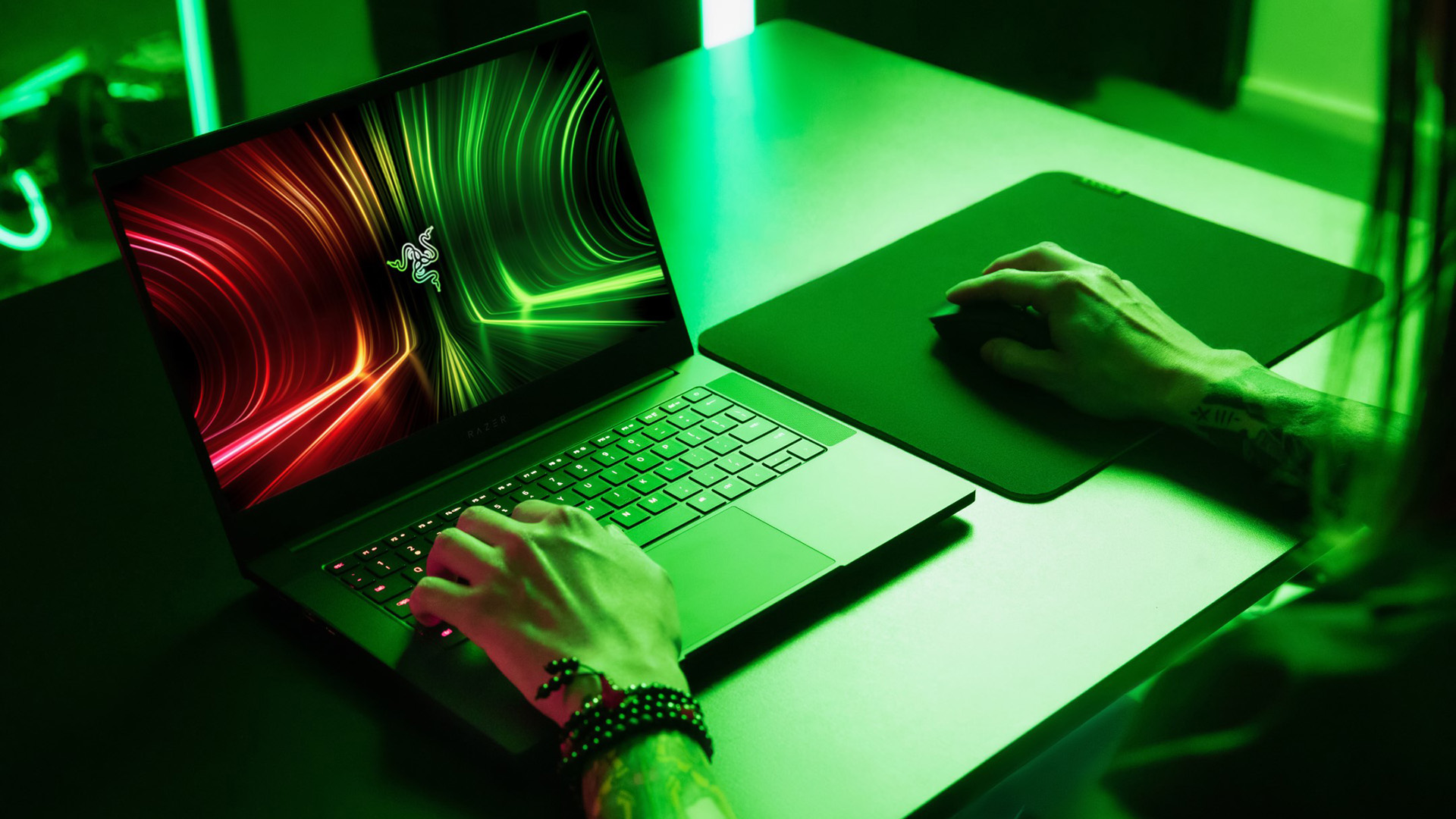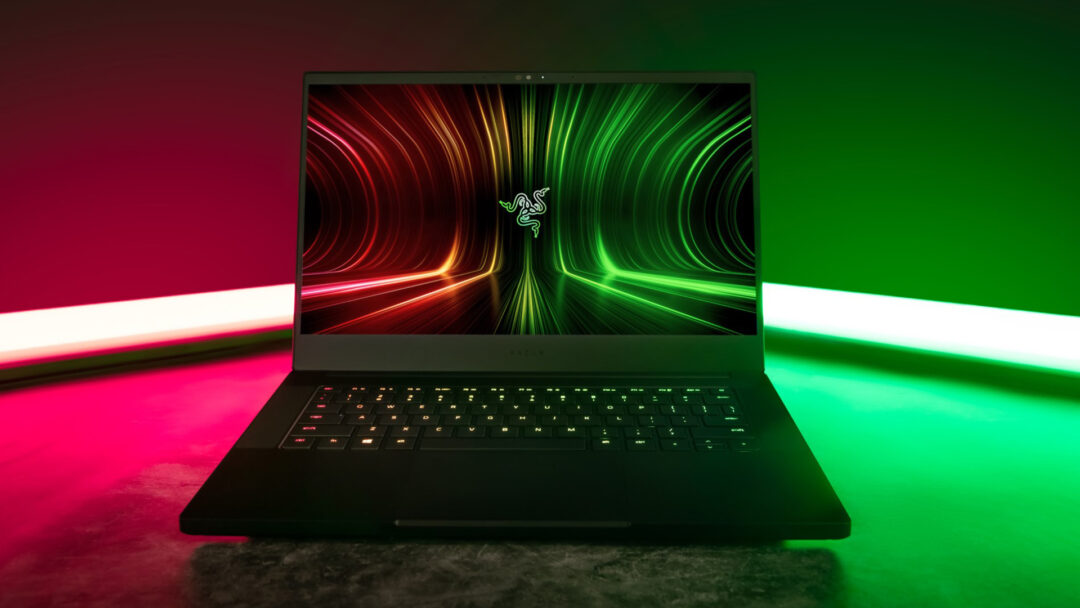The name Razer Blade is far from new. It has actually been around since Razer’s beginning in 2012. And since the Razer Blade Stealth, which we first saw at the CES show in 2016, the series has stood for ultralight gaming laptops in (sorry!) razor-sharp design.
The latest incarnation of the Razer Blade 14 is of course packed with upgraded technology. And where the original models required an external graphics accelerator via a Thunderbolt umbilical cord for fast graphics, they managed to push an Nvidia GeForce RTX 3080 graphics card into the sleek ultrabook case.
The Razer Blade 14 is a gaming computer, but it does not brag about it unnecessarily. Had it not been for the illuminated snake logo in the lid, the angular, black laptop could have slipped unnoticed into the rows of angular, black ThinkPads around the meeting table.

As one would expect from a luxury laptop, the cabinet is milled out of one piece of aluminum. It looks and feels super stable and elegant, and Razer will probably sell as many Razer Blade 14 to creative professionals as they will to gamers. It is also noteworthy that among the product images from Razer there is not a single one where you see a game on the screen.
The 16:9 format screen fills out the width of the cabinet well. It is not as colorful and bright as e.g. Asus ProArt StudioBook 16 OLED. This is more about speed. A refresh rate of 165 Hz is fully sufficient for serious level gaming. Especially when you consider that the resolution is QHD (2560 x 1440 pixels) – and not old-fashioned Full HD, which the majority of 14-inch laptops (and most gaming machines of any size) still have to settle for.
Razer should be commended for the keyboard, which feels a little more precise and tight than what we see on most laptops – even the most expensive. However, you have to live with the fact that the outer keys are a little narrower than optimal. But it is the price that we in the Nordic countries have more characters in the alphabet than in the American market, where most machines are sold.
“Were it not for the illuminated snake logo in the lid, the angular, black laptop could slip unnoticed into the rows of angular, black ThinkPads around the conference table.”
Hardware and benchmarks
The heart of the Razer Blade 14 is an AMD Ryzen 9 5900HP. It is a 3.3 GHz processor with eight cores and 16 threads. The Ryzen 9 processors have impressed us several times, as they provide almost as much computing power as Intel’s equivalent Core i9 processors – just cheaper.

As mentioned, the graphics card is Nvidia GeForce RTX 3080 with 8 gigabytes of video memory. Which is the fastest one can find in a laptop today, as the even more powerful GeForce RTX 3090 is not available in a laptop version.
With so much processing power, it’s a little surprising that only 16 gigabytes of RAM is mounted in Blade 14. The storage space is 1 terabyte SSD.
There is exactly what is needed for inputs and outputs: Two USB-C ports and two old-fashioned USB-A ports for mouse, keyboard and external hard drives. There is HDMI output (supports 120 Hz in 4K resolution). And if you want to go fast, you can connect a DisplayPort monitor via the USB-C port.
The Geekbench processor test in no way makes the Ryzen 9 processor break a sweat. 7,393 in multi-core and 1,428 in single-core puts Blade 14 on the top 10 list. A score of 6,922 in the PCMark 10 test is also excellent.
But one does not buy a gaming laptop alone to do household budgets in Excel. The 3D graphics test 3DMark Time Spy ends with a result of 10,069, while the older Fire Strike test ends with 22,251. It is better than most other laptops. But it’s – no wonder – also in line with other machines with GeForce RTX 3080 graphics.
The battery test performs a little better than expected. Just under three hours is far from being a record. But many larger gaming laptops have succumbed after half the time. And that means you can avoid putting the Razer Blade 14 in your bag and use it as a work or study computer, without having to bring the charger with you.

Most power in the smallest package
Razer Blade 14 is not the only PC that woo buyers with a need for fast graphics – and with the wallet to match it. The Asus ROG Flow 13 is even smaller and lighter, and it offers 4K screen resolution. But here an external “sidecar” is required for the graphics card. Should the GeForce RTX 3080 graphics card be inboard, all the alternatives are 16 or 17 inches.
Conclusion
The Razer Blade 14 is a charming little rogue of a laptop. Behind the discreet exterior hides forces that are unmatched in that size. If you need computing power and especially graphic muscles that can be taken anywhere, it is difficult to find a direct competitor.
It costs to be in that class, but in terms of performance, the price in no way seems unreasonable.

2500 €
Specifications
- Processor: 3.3 GHz AMD Ryzen 9 5900HP octa-core (16 threads)
- Display: 14″ QHD (2560 x 1440) IPS, 165 Hz refresh rate
- Memory: 16 GB DDR4
- Storage: 1 TB SSD
- Graphics: Nvidia RTX 3080 m. 8 GB GDDR6
- Operating system: Windows 10 Home, 64 bit
- Dimensions and weight: 32 x 1.7 x 22 cm / 1.8 kg
- Connectivity: Wi-Fi 6, Bluetooth 5.2, 2 x USB-C (with DisplayPort), 2 x USB-A, HDMI 2.1, 3.5 mm minijack (audio), HD webcam
- Web: razer.com
Benchmarks
Geekbench 5: 7.393 (multi-core), 1.428 (single-core)
PCMark 10: 6.922
3DMark Time Spy: 10.069
3DMark Fire Strike: 22.251
3DMark Night Raid: 37.054
Cinebench R15: 116 fps / 2.000 cb
HDTach: 1.372 MB/s
Battery test: 2:53 hours

